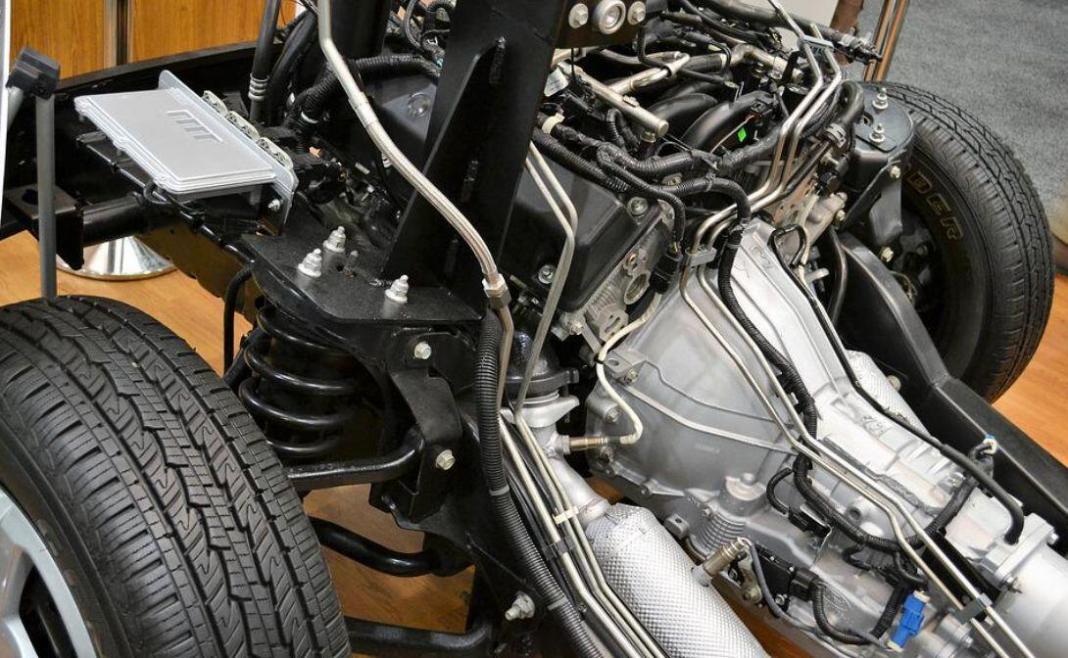RFID technology is widely used in almost all industries and for such a highly competitive industry like the automotive industry, RFID tracking has proven to be an essential thing now more than ever. This radio frequency helps to search, identify, track, and communicate with items and people. RFID is similar to barcoding in that data from a label are captured by a device that stores the data in a database. RFID has proven to be more advantageous over systems that use barcode tracking software. In RFID tag data can be read outside the line of sight, whereas barcodes must be aligned with an optical scanner to read data. RFID has the ability to track and trace in challenging environments.
The labels are not affected by extreme environmental conditions such as high humidity, temperature changes, chemical exposure, or exposure to paint and rough handling. All these can demolish the paper bar code labels but not RFID. Also during the covid time, many things were not manageable because everything required human intervention. But in the new contactless environment, RFID has connected the entire supply chain digitally by providing real-time alerts saving cost and time.
RFID systems consist of three components: RFID tag, RFID reader, and antenna. RFID tags consist of an integrated circuit and an antenna, which transmit data to the RFID reader which is also known as an interrogator. Information transmitted from the tags is then transferred to a host computer system, where data is stored in a database and analyzed later.
RFID Reader
RFID Reader is the brain of the RFID system and a prerequisite for operation. These interrogators transmit and receive radio waves in order to communicate with RFID tags. RFID readers are of two types:
Fixed RFID readers
These readers are static and set up on walls, desks, portals, or other stationary locations.
Mobile RFID Readers
These readers provide information on objects equipped with RFID tags. It is able to connect with a host computer or smart device.
The RFID tags are also known as transponders and they send information to the RFID interrogators which capture the information via radio waves and send it across a server. The main benefit is that unlike a vision-based system for bar code readers, RFID does not require any direct line of sight to identify objects.
RFID tags
There are two kinds of RFID tags i.e active and passive tages:
ACTIVE TAGS
An active RFID tag has its own battery and internal transmitter in the form of a transponder. These are able to transmit signals to an RFID reader up to 150 m away depending on frequency levels. These tags are popularly used among businesses that want to track assets in real-time They are more expensive than passive RFID tags as they have a higher signal range.
PASSIVE TAGS
A passive RFID tag is without a battery typically used in small-scale operations and tracking systems. It has no internal power source instead powered by the energy transmitted from an RFID scanner. These tags are more utilized by businesses that contain a large inventory of physical assets as they are not expensive and have the potential for a longer operational life than active tags.
Benefits of RFID
- Real-time tracking
Data transparency is maintained via real-time alert i.e label attached to the object can be easily tracked and according to the checkpoints the data can be updated in the system accordingly. RFID tracking technology provides traceability, and insightful management information relating to production and operations and also allows tracking asset management software. The automotive industry has largely benefitted from the implementation of IoT technology-enabled RFID tracking systems.
In large operations, the inventories cannot be counted manually as it will lead to errors and inaccuracies. The use of RFID allows better communication between components, products, machinery, and even workers. The labels are accessible even when the product is in a box and allows last-minute customization operations. The machines themselves can authenticate their own spare parts, which ensures the accuracy of parts being correctly assembled reducing the errors. This is a very cost-efficient design. RFID can help by tracking inventory thus enhancing the customer experience and increasing sales.
- Enhances the work process
RFID automates work from start to end. All shipments from going in and out are tracked effortlessly. Thus furnishing efficiency, transparency, and safety to companies. Automatic RFID tracking is very accurate, so it minimizes reading errors.
- Reduces overstocking of inventories
RFID provides all data about inventory which can be used to analyze the demand in the market. Thus estimating which stock is running out and what needs to be ordered. Thus companies can keep inventory at a minimum.
- Saves time
RFID gives the power to enhance the workforce and automate the work which will save more time.
- Decreases costs
RFID monitoring systems can contribute to significant cost savings by reducing workers’ hours and effort, asset replacement expenses, and even prominent errors all of which can have a deleterious impact on operations.
Conclusion
All these attributes of RFID play a key role in manufacturing. As RFID solutions deliver impressive efficiency while minimizing the potential for lost inventory and other costly problems. Executing RFID into automotive manufacturing and warehouse operations gives us the flexibility to be ready for what comes in the future. Many companies are working a lot in this sector. But Aeologic Technologies is one such company which is providing the best RFID solution.
You may also want to read,







